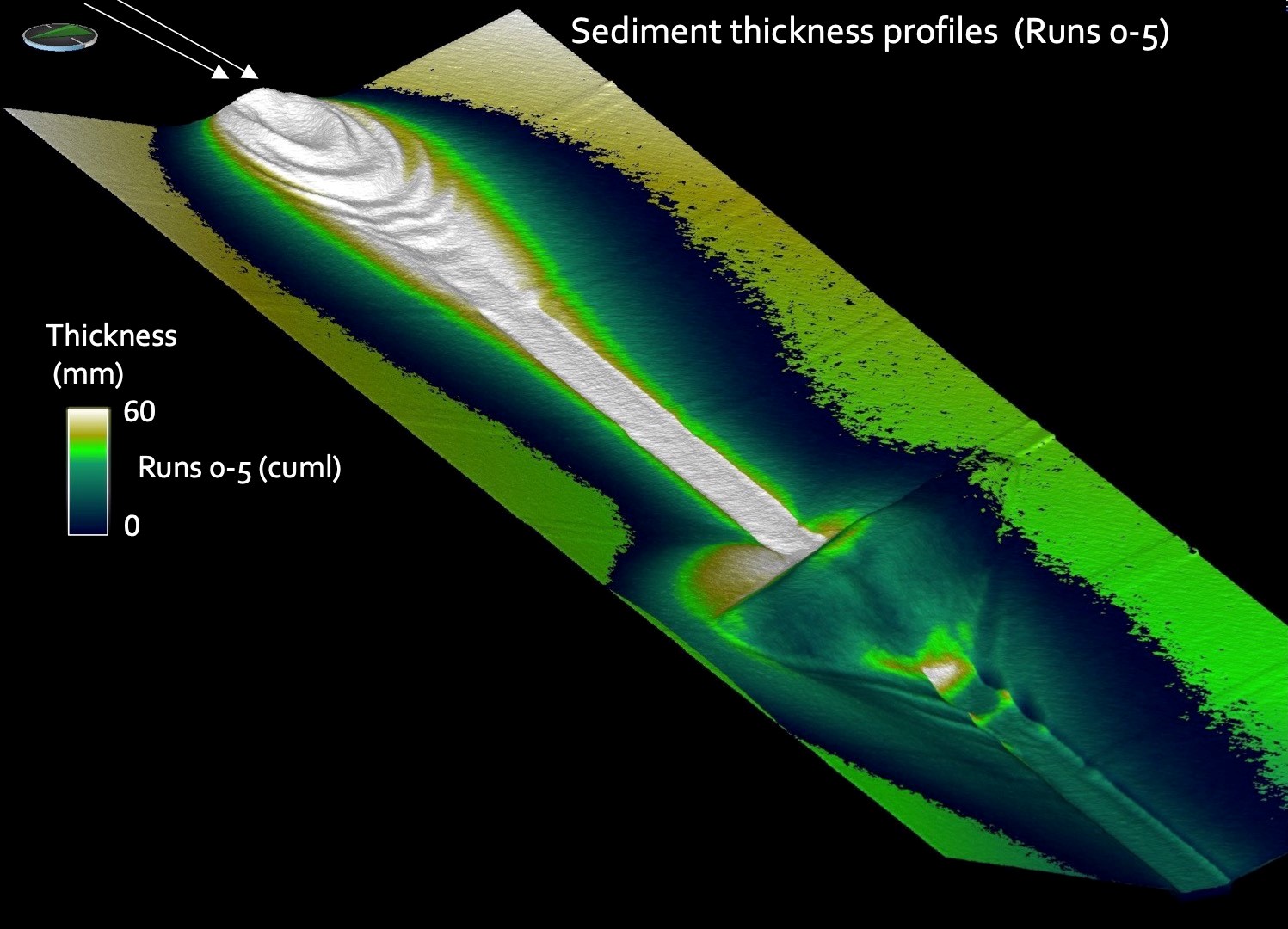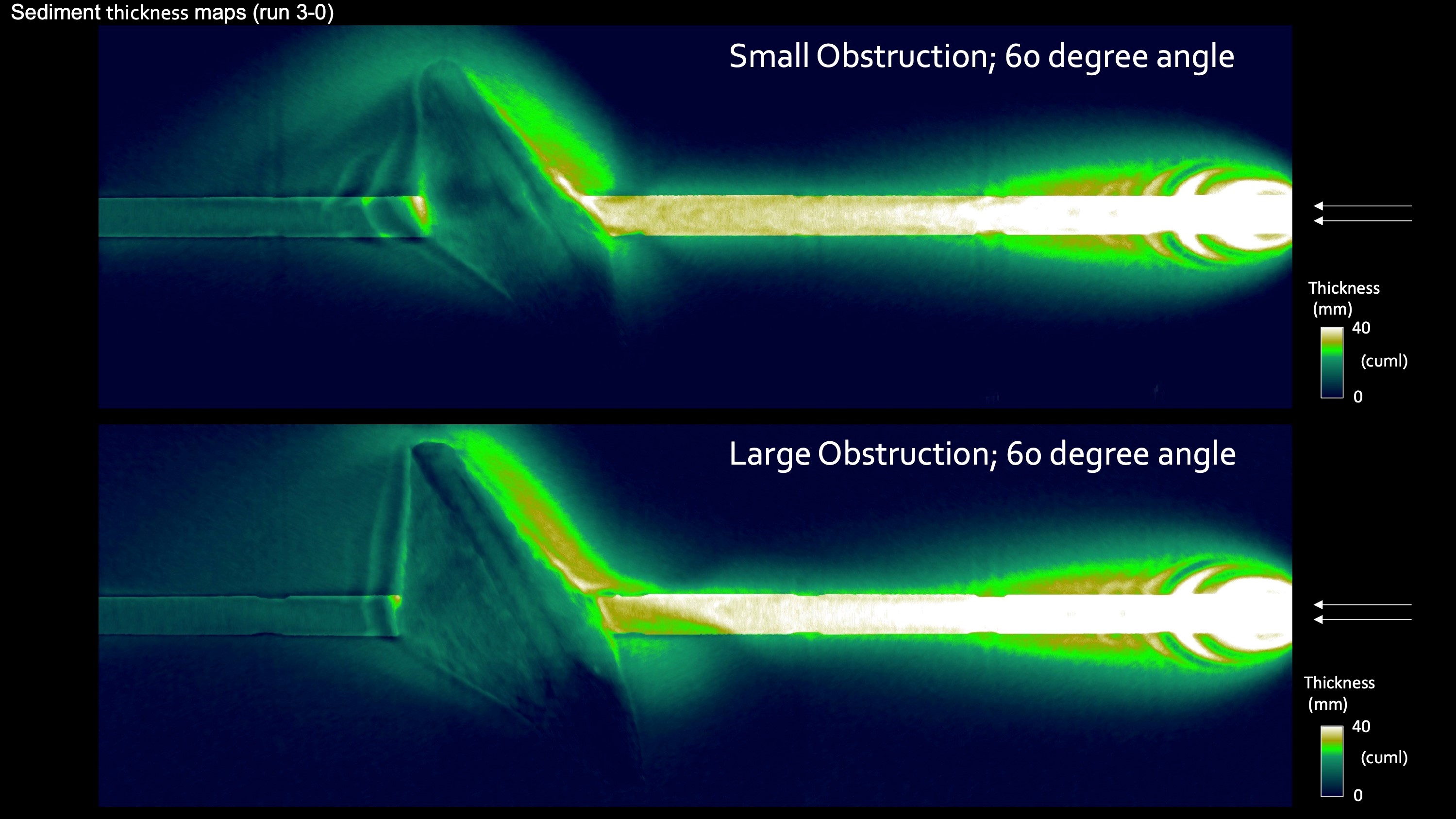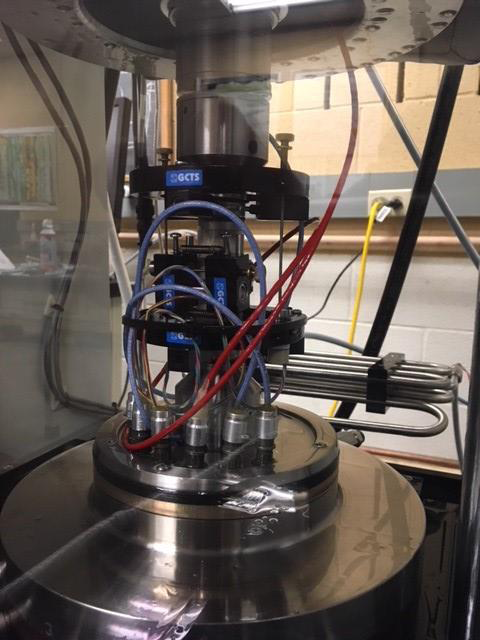July 27, 2020

Dallas Dunlap
What's Happening in the Quantitative Clastics Lab
In the Quantitative Clastics Laboratory (QCL), we focus on the mechanisms and processes involved in the transport of sediment from the hinterlands, through the shoreline, and into deep ocean basins. Much of this work is focused on outcrop measurements and interpretation of remote sensing data such as drone imagery or, more often, marine seismic data. In recent studies, high-resolution seismic data has identified peculiarities in subaqueous channels that point to rafted debris deposited quickly in these more long-lived channel forms. One new goal in our ongoing research on channel morphology is understanding whether the debris from a subaqueous landslide initiated by earthquakes might cause a channel to alter its direction, or “avulse.”
To test this theory, we recently completed multiple experimental flows of channelized sediment in the flume tank at The University of Texas to evaluate the impact from an obstruction on a channel. We learned that a simple obstruction can greatly effect the flow field of the dense waters moving down the channel axis and that the orientation of the obstruction, more so than its size, can most impact the turbidity flows to escape the channel walls, dispersing sediments and contributing to channel evolution and avulsion.



Donnie Brooks
What's Happening in the Rock Mechanics Lab

A rock sample reading for triaxial testing.
I am currently writing up the results of our rock mechanics testing on the four lithofacies identified in Lithofacies of the Wolfcamp and Lower Leonard Intervals, Southern Midland Basin, Texas. Samples were taken from the interval between depths of 7077 and 8052 feet in the E.O. Greer #1 well core.
I am looking forward to returning to the lab to repeat this process for multiple wells in the Austin Chalk and to assemble a regional geomechanical perspective in that formation, which may be of interest to many researchers.
Earlier Study
Baumgardner, R. W. Jr., Hamlin, H. S., and Rowe, H. D., 2016, Lithofacies of the Wolfcamp and Lower Leonard Intervals, Southern Midland Basin, Texas: The University of Texas at Austin, Bureau of Economic Geology, Report of Investigations No. 281, 67 p. doi.org/10.23867ri0281D.